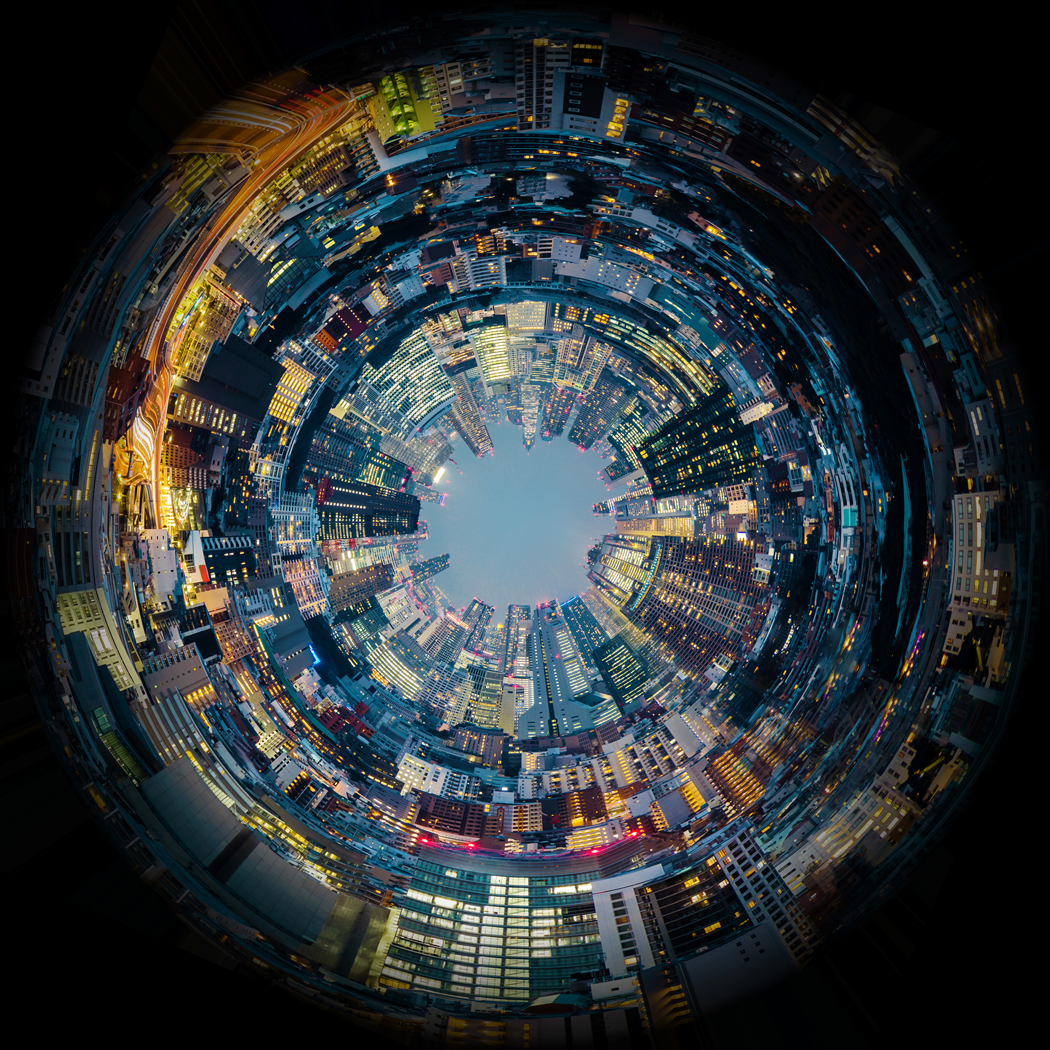-
Business valuations
We offer expert valuation advice in transactions, regulatory and administrative matters, and matters subject to dispute – valuing businesses, shares and intangible assets in a wide range of industries.
-
Capital markets
You need corporate finance specialists experienced in international capital markets on your side if you’re buying or selling financial securities.
-
Complex and international services
Our experience of multi-jurisdictional insolvencies coupled with our international reputation allows us to deliver the best possible outcome for all stakeholders.
-
Corporate insolvency
Our corporate investigation and recovery teams can help you manage insolvency situations and facilitate the best outcome.
-
Debt advisory
An optimal funding structure for your organisation presents unprecedented opportunities, but achieving this can be difficult without a trusted advisor.
-
Expert witness
Our expert witnesses analyse, interpret, summarise and present complex financial and business-related issues which are understandable and properly supported.
-
Financial models
A sound financial model will help you understand the impact of your decisions before you make them. Talk to us about our user-friendly models.
-
Forensic and investigation services
We provide investigative accounting and litigation support services for commercial, matrimonial, criminal, business valuation and insurance disputes.
-
Independent business review
Is your business viable? Will it remain viable in the future? A thorough independent business review can help your organisation answer these fundamental questions.
-
IT forensics
Effective ESI analysis is integral to the success of your business. Our IT forensics experts have the technical expertise to identify, preserve and interrogate electronic data.
-
Mergers and acquisitions
Grant Thornton provides strategic and execution support for mergers, acquisitions, sales and fundraising.
-
Raising finance
Raising finance - funders value partners who can deliver a robust financial model, a sound business strategy and rigorous planning. We can guide you through the challenges that these transactions can pose and help you build a foundation for long term success once the deal is done.
-
Relationship property services
Grant Thornton offers high quality independent advice on the many financial issues associated with relationship property from considering an individual financial issue to all aspects of a complex settlement.
-
Restructuring and turnaround
Grant Thornton’s restructuring and turnaround service capabilities include cash flow, liquidity management and forecasting; crisis and interim management; financial advisory services to companies and parties in transition and distress
-
Transaction advisory
Our depth of market knowledge will steer you through the transaction process. Grant Thornton’s dynamic teams offer range of financial, commercial and operational expertise.
-
Corporate tax
Grant Thornton can identify tax issues, risks and opportunities in your organisation and implement strategies to improve your bottom line.
-
Employment tax
Grant Thornton’s advisers can help you with PAYE (payroll tax), Kiwisaver, fringe benefits tax (FBT), student loans, global mobility services, international tax
-
Global mobility services
Our team can help expatriates and their employers deal with tax and employment matters both in New Zealand and overseas. With the correct planning advice, employee allowances and benefits may be structured to avoid double taxation and achieve tax savings.
-
GST
GST has the potential to become a minefield and can be expensive when it goes wrong. Our technical knowledge can help you minimise the negative impact of GST
-
International tax
International tax rules are undergoing their biggest change in a generation. Tax authorities around the world are increasingly vigilant, especially when it comes to global operations.
-
Research and Development
R&D tax incentives are often underused and misunderstood – is your business maximising opportunities for making claims?
-
Tax compliance
Our advisers help clients manage the critical issue of compliance across accountancy regulations, corporation law and tax. We also offer business and wealth advisory services, which means we can provide a seamless and tax-effective offering to our clients.
-
Transfer pricing
Tax authorities are demanding transparency in international arrangements. We businesses comply with regulations and use transfer pricing as a strategic planning tool.
-
Audit methodology
Our five step audit methodology offers a high quality service wherever you are in the world and includes planning, risk assessment, testing internal controls, substantive testing, and concluding and reporting
-
Audit technology
We apply our audit methodology with an integrated set of software tools known as the Voyager suite. Our technology has been developed to produce quality audits that are effective and efficient.
-
Financial reporting advisory
Our financial reporting advisers have the expertise to help you deal with the constantly evolving regulatory environment.
-
Business architecture
Our business architects help businesses with disruptive conditions, business expansion and competitive challenges; the deployment of your strategy is critical to success.
-
Cloud services
Our team is led by cloud business experts who tailor services to the needs of your organisation, from strategy and implementation to ongoing services assurance.
-
Internal audit
Our internal audits deliver independent assurance over key controls within your riskiest processes, proving what works and what doesn’t and recommending improvements.
-
IT advisory
Our hands on product experience, extensive functional knowledge and industry insights help clients solve complex IT and technology issues
-
IT privacy and security
IT privacy and security should support your business strategy. Our pragmatic approach focuses on reducing cyber security risks specific to your organisation
-
Organisational & cultural change
The key to sustainable and future growth is a unified organisation operating within a strong cultural context, where transparency and communication are the priority for Kaimahi, and where visible leadership means walking the talk – but where does that journey begin?
-
Payroll assurance
Our specialist payroll assurance team can conduct a review of your payroll system configuration and processes, and then help you and your team to implement any necessary recalculations.
-
PCI DSS
Our information security specialists are approved Qualified Security Assessors (QSAs) that have been qualified by the PCI Security Standards Council to independently assess merchants and service providers.
-
Process improvement
As your organisation grows in size and complexity, processes that were once enabling often become cumbersome and inefficient. To maintain growth, your business must remain flexible, agile and profitable
-
Procurement/supply chain
Procurement and supply chain inputs will often dominate your balance sheet and constantly evolve for organisations to remain competitive and meet changing customer requirements
-
Project assurance
Major programmes and projects expose you to significant financial and reputational risk throughout their life cycle. Don’t let these risks become a reality.
-
Risk management
We understand that growing companies need to establish robust internal controls, and use information technology to effectively mitigate risk.
-
Robotic process automation (RPA)
RPA is emerging as the most sophisticated form of automation used to help businesses become more agile and remain competitive in the face of today’s ongoing digital disruption.

In our recent research report titled, The Circular Revolution: A call to action for Aotearoa New Zealand, we said: “We are at a critical juncture in history. A place and time where we look extinction in the eye and see our own reflection staring back … The simple truth is we live on a planet with finite resources. Yet our consumption of these resources is growing exponentially. We have a choice to make: invest in our planet or forfeit our lives and the lives of generations to come. But when the task of saving the planet is so immense, how do we begin, and what action can each of us take?”
So, how do we begin? Enter degrowth.
Fear not, degrowth isn't a dirty word for businesses. Degrowth is a concept that’s rapidly gaining traction, and put simply, it’s a planned reduction and change in the way we use materials and energy. Degrowth doesn’t mean your business needs to go backwards, but to focus on ways of becoming more resilient and sustainable, and less vulnerable at the core of your organisation through heavy reliance on diminishing natural resources.
On a macro-economic level, degrowth ensures resources are shared more equitability and used to only create things people need. Currently, financial growth is the central pillar of our global economy and is used as a measure of how humans progress. But should an unrelenting focus on wealth generation be used as a proxy for the advancement of humanity? No. And we shouldn’t be afraid of focusing on new goals as we transition to a sustainable future.
What action can your business take?
For companies, degrowth starts with evaluating your business model and presents an opportunity to think about how your organisation can evolve as our natural environment changes. A degrowth mindset embraces a circular economy instead of our current linear system of take, make and waste – taking from the environment to make products that eventually end up in landfill as waste. You can design waste out of your operations by adopting circular business models:
Product as a service (PaaS)
The PaaS business model sells the use of a service or product, but not the product itself. The core function and benefit of the product is provided to the customer, but the manufacturer or distributor retains ownership of the product and its materials. They take responsibility for maintaining the product and keeping its materials at their highest value use – and out of landfill. Examples of PaaS products and services include leasing of equipment or transport solutions, hiring tools or renting apparel.
Circular materials
These materials are renewable or recycled resources that are kinder to humans, animals and the environment. Certain plastics and metals can be repurposed for their next lifecycle in a new product; for example, the rare earth elements and metals Apple removes from old phones to make new ones, and Citizen Collective’s process of turning bread into beer and then back into bread again.
Product life extension
As the name suggests, this model maximises the life of a product for as long as possible before repurposing or disposing of it, ie, it’s built to last. This is achieved by designing products to last as long as possible, using robust materials and making repairs easily accessible to users. Extending the life of a product can involve refurbishing or rebuilding existing equipment instead of buying new parts or machines. Second hand stores and websites, and donating goods are also excellent examples of how we can extend the life of our products – if you no longer have a use for a certain item, someone else will.
Product loops
This involves circulating products back through the business or its allied organisations to retain or recapture the value of materials through re-use, remanufacturing and/or recycling. For example, Interface Inc has implemented a take back system for millions of kilogrammes of used carpet and carpet tiles. These would otherwise end up in landfill. They are turned into yarn for new products or granules for the backing of newly produced tiles.
Use optimisation
Use optimisation maximises the utilisation of a product or service more efficiently. This model often comes in the form of sharing platforms which match and connect buyers and vendors seeking things like second hand goods or spaces to rent for various purposes. Trade Me, Sharedspace and Mutu’s exchange platform are good examples of this.
Many existing business models won’t adapt to a natural environment that can no longer support them. By embracing degrowth and new possibilities, whole new industries will develop in a more circular and sustainable economy. Companies that play an important role in a circular society - such as resource sharing platforms, repair and reuse services, and organisations that champion employee and environmental welfare will see success in the future. Is it time for your business to consider some strategic repositioning? How can your organisation add value to society without increasing waste year on year? How can your organisation degrow and still survive?
But wait, there’s more value for your business beyond saving the planet …
Catering to the rise of the conscious consumer market
Our research revealed consumer sentiment is moving in the right direction for the planet. Planned obsolescence is no longer a viable offering to consumers who are becoming increasingly conscious of their purchasing behaviour. Businesses that produce high quality goods with a minimal amount of by-product waste, longer lifespans and the ability to be reused, repurposed or recycled have a distinct competitive advantage over those that don’t.
Eliminating unnecessary costs
Degrowth can be a tool to increase efficiencies in businesses. Businesses can reduce unnecessary costs by eliminating waste and streamlining their processes at every step of the supply chain. Take product packaging for example; reducing the packaging for products means less packaging materials are purchased, faster production times are achieved, and less machinery – and energy – is used in the process.
Recruiting and retaining talent
Employees are expecting more from the brands they work for, and they leave organisations that don’t align with their values. They want to work for companies that strive to do better for people, communities and the environment. COVID-19 was a major catalyst for change as it forced people to consider what truly mattered to them and the world around them, and whether the companies they worked for aligned with these values. In October 2022, according to the U.S Bureau of Labour Statistics, 2.6% of the workforce quit their jobs. This is around 4 million people dissatisfied with their roles and leaving their jobs to seek opportunities elsewhere.
In China, ‘tang ping’ (lying flat) is becoming more popular throughout society. It is a social movement where young people are choosing to reject materialism, long working hours, and high costs of living. Instead, by ‘lying flat’, people are focusing on personal happiness, minimalism, and sustainability.
Reducing risk by remaining resilient
With the price of gas and natural resources increasing due to depleting resources, now is the time for businesses to plan for the inevitable. Degrowth can be incorporated into your risk management strategy to build resilience; it encourages businesses to think about how supply chains can be kept as lean as possible. This can be achieved through shared ownership or shared use of logistics and materials. An example of this can be seen in our very own kiwi startup Mutu. It has developed an online resource management platform where organisations can list, sell, and re-use assets to reduce procurement costs, and more importantly – decrease landfill waste. You can find a multitude of items on the site from office furniture and laptops, to 3D printers and cars.
Embrace degrowth or risk being left behind
As we continuously grapple with disruptions caused by climate change, it’s vital we build develop capabilities that will prepare us for the future. To degrow will build resilience into our businesses to benefit our environment, communities, and a more circular economy. It ensures that we are not reliant on unsustainable fossil fuels and destructive natural extraction to support our lives and livelihoods. Degrowth brings the focus back to people and our natural living environment.




